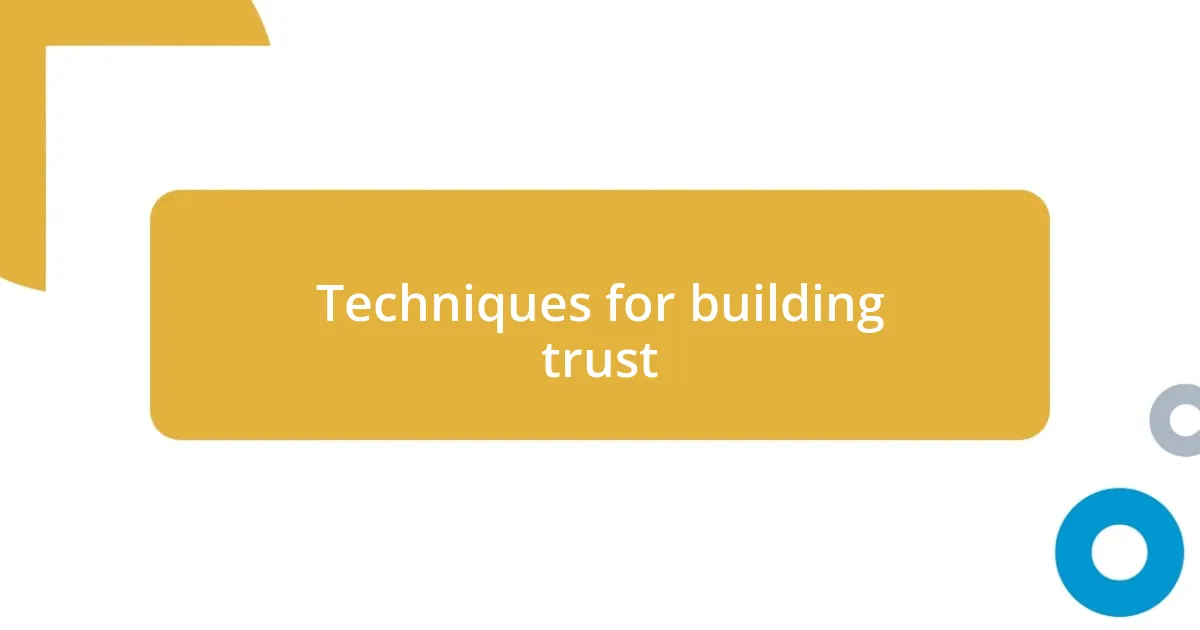Key takeaways:
- Authentic engagement begins with active listening and understanding the audience’s needs, which fosters trust and deeper connections.
- Key principles of effective engagement include empathy, transparency, and consistent communication to build relationships.
- Adapting engagement strategies to the audience’s characteristics, such as tone and interactive elements, enhances participation and connection.
- Successful case studies show that storytelling and community involvement can significantly elevate engagement by creating emotional connections and empowering participants.

Understanding authentic engagement strategies
Authentic engagement strategies are all about building genuine connections with your audience. I vividly remember attending a workshop where the speaker emphasized the importance of listening rather than talking. It hit home for me—when was the last time I truly listened to what my audience needed? That moment made me realize that engaging authentically starts with understanding others first.
I often find that authenticity breeds trust. For instance, when I candidly share my struggles and successes in professional settings, I’ve noticed a palpable shift in how others respond—they become more willing to share their own experiences. Isn’t it refreshing to let down our guard and connect on a human level? Through these exchanges, I’ve discovered that the most robust engagement doesn’t come from polished presentations but from honest conversations.
Implementing these strategies requires a certain level of vulnerability. I remember the first time I opened up about my fears during a team meeting; the room transformed from one of formality to a space of empathy and support. It made me question: what’s holding us back from being our true selves? Embracing our authentic selves creates a ripple effect, inviting others to do the same and fostering a richer, more connected environment.

Importance of genuine interactions
It’s quite striking to see how genuine interactions can shape relationships. I recall a time when I was facilitating a community discussion. Instead of lecturing, I asked open-ended questions and really listened to the responses. The energy in the room shifted dramatically; suddenly, participants felt valued and eager to share their thoughts. This showed me that when you prioritize authenticity, it opens the door to deeper connections.
Here are some key reasons why genuine interactions are crucial:
- Fosters trust: Authenticity creates a sense of safety, encouraging people to be open and honest.
- Enhances communication: When we engage genuinely, our messages become clearer and more impactful.
- Strengthens relationships: Real connections deepen over time, leading to lasting partnerships or friendships.
- Promotes collaboration: A culture of genuine interaction encourages teamwork and innovation.
- Increases satisfaction: Both in professional and personal settings, genuine engagement leads to higher fulfillment and happiness.
These elements, I’ve found, are not just beneficial—they’re essential for forging meaningful connections.

Key principles of engagement
When I think about the key principles of engagement, a few elements stand out. First and foremost is active listening. I remember a networking event where I made a conscious effort to listen rather than just wait for my turn to speak. The conversations flowed more naturally, and I walked away with more valuable connections than I had anticipated. This reinforced my belief that engagement starts with truly hearing others.
Another principle that really resonates with me is the power of empathy. During a particularly challenging project, I took the time to understand my colleagues’ stress levels and pressures. By checking in with them and validating their feelings, I noticed a shift in team morale. It’s incredible how a little empathy can light up someone’s day, bringing us closer together and fostering an environment where everyone feels appreciated.
Finally, transparency plays a critical role in engagement. I’ve often found that being open about my own challenges makes others feel safe to do the same. For instance, when I shared my concerns during a strategy meeting, the discussion evolved into a brainstorming session that exceeded my expectations. Before long, we were collaborating openly, proving that vulnerability can lead to collective strength.
| Principle | Description |
|---|---|
| Active Listening | Truly hearing others to foster genuine dialogue. |
| Empathy | Understanding and validating others’ feelings. |
| Transparency | Being open about challenges fosters trust. |

Techniques for building trust
Building trust isn’t something that happens overnight; it requires consistent effort and genuine actions. One technique I find invaluable is being reliable. I remember a time when I made a commitment to help a friend with a project. I showed up on time and followed through on my promises, which not only strengthened our friendship but also established a sense of dependability. It’s fascinating how small actions can accumulate into a solid foundation of trust.
Another important technique is to share experiences, both successes and failures. I once opened up during a panel discussion about my initial failures in a project. The audience responded with such warmth, and many shared their own struggles in return. This exchange made me realize that vulnerability can be a powerful tool; it fosters a sense of connection and shows others that trust is a two-way street. Wouldn’t you agree that when we relate to each other’s journeys, we often feel more connected?
Lastly, consistency in communication plays a pivotal role in trust-building. I have found that regularly checking in with colleagues, even just to say hello, can make a world of difference. Recently, I started sending out brief weekly updates about our project status, and I noticed how it kept everyone in the loop and engaged. It’s a simple gesture, yet it reassures people that they are valued and that their input matters. How do you think regular communication impacts your relationships? In my experience, it transforms them for the better.

Strategies for measuring engagement
Measuring engagement effectively requires a blend of qualitative and quantitative approaches. I’ve often relied on surveys and feedback forms to gather real insights into people’s experiences. Once, after a community event, I distributed a simple form asking for thoughts on what resonated most with attendees. The responses were eye-opening, revealing not just participation levels but deeper sentiments that numbers alone could never show.
Incorporating social media analytics is another strategy I advocate for. Monitoring likes, shares, and comments provides a clear picture of the content that engages your audience. I recall a time when I experimented with different types of posts on my social channels. By evaluating the engagement rates, I identified which topics sparked the most conversations. This adjustments not only boosted my online presence but also cultivated a community that felt more connected. Have you ever noticed how a single post can ignite a wave of interaction?
Finally, the power of direct conversations cannot be overlooked. I find that scheduling casual one-on-one check-ins often yields the most authentic feedback. During a recent project, I made it a point to chat with team members over coffee, genuinely asking how they felt about our progress. These informal chats revealed nuances about team dynamics that I hadn’t anticipated, transforming my approach moving forward. How valuable do you think those casual moments of connection are in shaping overall engagement? In my experience, they’re essential.

Adapting engagement for different audiences
When adapting engagement strategies for different audiences, it’s essential to consider their unique motivations and preferences. I remember a workshop I conducted for a group of young entrepreneurs. I tailored my message by using relatable examples from their age group, which sparked enthusiastic discussions. Have you noticed how connecting on a personal level can make a vast difference? It certainly did for me that day.
Shifting your approach based on the audience isn’t just about content—tone matters too. During a presentation for seasoned professionals, I adopted a more formal tone, while a casual conversation with college students felt more relaxed and informal. I’ve learned that the right tone shapes how your message is received. How do you choose the best tone for your engagements? In my experience, it often comes down to understanding who’s in the room.
Finally, I’ve found that including interactive elements can increase engagement significantly, especially with younger audiences. At an event aimed at high school students, I introduced a live polling session, which allowed everyone to participate actively. The energy in the room was palpable; it transformed a standard presentation into a vibrant dialogue. Isn’t it interesting how involvement can turn passive listeners into active participants? From that experience, I realized that engagement is most effective when everyone feels included.

Case studies of successful engagement
One striking case study that comes to mind is a nonprofit organization I worked with, focusing on mental health awareness. They implemented a storytelling campaign where individuals shared their personal experiences through short videos. This approach not only humanized the issue but also fostered a deep connection among viewers. I remember how emotionally charged the discussions became after these stories were aired; people didn’t just engage—they shared their own journeys. Have you ever witnessed how raw, authentic connections can break down barriers? The impact was profound.
Another memorable experience was collaborating with a local business that hosted community clean-up events. We actively involved participants by providing them with roles that suited their strengths, from leading discussions to organizing logistics. The owners were amazed at the turnout, as participants began inviting friends and sharing the event online. What struck me was how creating a sense of ownership turned casual attendees into passionate advocates. Isn’t it fascinating how empowerment can elevate engagement to another level?
Finally, I encountered a fascinating example from a fellow marketer who ran an online challenge encouraging followers to share their fitness journeys. The engagement skyrocketed when participants started tagging friends and sharing their progress using a specific hashtag. I found it inspiring to see how community-driven initiatives could spark motivation and excitement in individuals. Reflecting on this, don’t you think that providing a platform for people to rally around can cultivate a stronger sense of belonging? That case reinforced my belief that engagement thrives in environments where individuals feel seen and valued.












